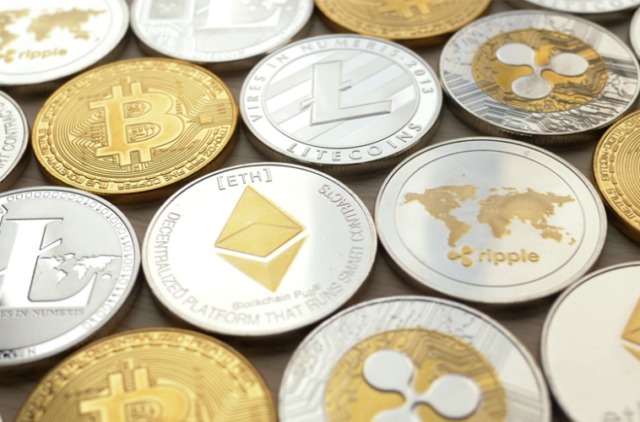- The Mexican Peso retreats in a volatile selloff after markets shifted into risk aversion mode due to geopolitical tensions.
- Israel allegedly retaliated against Iran, with explosions heard in the Iranian city of Isfahan.
- USD/MXN rose to just below 18.00 on the news, but then retreated and settled at 17.30.
The Mexican Peso (MXN) is trading above 17.30 on Friday after an extremely volatile 24 hours in which the currency depreciated more than five percentage points in some pairs as a result of a mass exodus to safety.
The Mexican Peso was rocked by news of an Israeli strike against Iran in retaliation for Iran's April 13 drone strikes against Israel. According to Reuters, explosions were heard in the Iranian city of Isfahan, where a military base is located.
Markets reacted in extreme fashion with investors piling into safe haven assets such as Gold, Japanese Yen (JPY), Swiss Franc (CHF) and US Dollar (USD). At the other end of the spectrum, perceived “risky” currencies such as the Mexican Peso and the South African Rand were hit.
This caused the sudden hit to the Mexican Peso pairs, as investors as a whole let the currency fall.
The Fed's speeches also fuel the weakness of the Mexican Peso against the USD
The sharp drop in the Mexican Peso was not caused solely by the flight to safety from Israel's retaliation, but in the case of its most traded pair, the USD/MXN, also by the impact of the more aggressive talks by lawmakers in the United States Federal Reserve (Fed).
If we expect three 0.25% interest rate cuts from the Fed in 2024, the mood now coming out of the US central bank suggests that officials only expect one, possibly two, and in extreme cases that this does not materialize. no cut to the federal funds rate this year.
Atlanta Fed President Raphael Bostic said Thursday that U.S. inflation is returning to the 2.0% target at a slower pace than expected and that interest rate cuts are likely, but not until end of the year.
New York Fed President John Williams went further, saying he felt no urgency to cut interest rates and that monetary policy is in a good place.
US data also supports the notion that borrowing costs are where they should be given inflationary trends.
The Philadelphia Fed Manufacturing Survey's Prices Paid Index, a regional barometer of inflation, unexpectedly rose to 23.00 (up from 3.7) in April, suggesting that price pressures remain very much alive and well.
A stable reading for initial jobless claims further reinforces the view that the US labor market is strained and is likely to continue fueling inflation.
Since higher inflation will require maintaining higher interest rates to combat it, the odds of the Federal Reserve cutting interest rates continue to fall. This is positive for the US Dollar, as higher interest rates tend to increase foreign capital inflows.
On the data front, Mexican Peso traders will be keeping an eye on Mexican retail sales data at 12:00 GMT on Friday, although the likelihood of it moving the dial for the Peso remains low.
Technical analysis: USD/MXN rises
USD/MXN, the value of one US Dollar in Mexican pesos, broke the bullish pennant price pattern it had formed on the 4-hour chart, rose to the pattern's target at around 17.43, and then surpassed it.
The breakout to the upside now suggests that a bullish reversal has occurred in both the short and medium-term trends. This now favors long positions in those annual horizons (up to 6 months).
USD/MXN 4-hour chart

USD/MXN drilled but ultimately failed to hold above an important trend line for the long-term downtrend, suggesting caution should be exercised before turning super-bullish long-term.
That being said, the highs and lows continue to rise on the 4-hour chart and as the old adage goes, “the trend is your friend until the end curve”, so the default expectation is more positive in the short term.
The Relative Strength Index (RSI) has risen into overbought territory, suggesting an increasing risk of a pullback. However, the RSI often becomes overbought for long periods of time in strongly trending markets. Traders are advised not to increase their long positions and wait for a pullback towards neutral territory before loading their longs again.
A decisive break above the trendline at around 17.45 would provide reconfirmation of further upside and trigger a bullish target at around 18.15.
A decisive breakout would be one characterized by a longer-than-average green daily candle that pierces above the trend line and closes near its high, or three green candles in a row that pierce above the level.
If a pullback persists, the 200-day SMA support at 17.17 is likely to provide a foothold for the price pullback.
Frequently Asked Questions about the Mexican Peso
What is MXN?
The Mexican Peso is the legal tender of Mexico. The MXN is the most traded currency in Latin America and the third most traded on the American continent. The Mexican Peso is the first currency in the world to use the $ sign, prior to the later use of the Dollar. The Mexican Peso or MXN is divided into 100 cents.
What is Banxico and how does it influence the MXN?
Banxico is the Bank of Mexico, the country's central bank. Created in 1925, it provides the national currency, the MXN, and its priority objective is to preserve its value over time. In addition, the Bank of Mexico manages the country's international reserves, acts as a lender of last resort to the banks and advises the government economically and financially. Banxico uses the tools and techniques of monetary policy to meet its objective. Regarding the influence of the central bank on the Mexican peso, a rise in Banxico interest rates tends to strengthen the MXN, while low rates will tend to devalue the local currency.
How does inflation impact the MXN?
When inflation is high, the value of the Mexican Peso (MXN) tends to decrease. This implies an increase in the cost of living for Mexicans that affects their ability to invest and save. At a general level, inflation affects the Mexican economy because Mexico imports a significant amount of final consumption products, such as gas, fuel, food, clothing, etc., and a large amount of production inputs. On the other hand, the higher the inflation and debt, the less attractive the country is for investors. However, depending on the context, high inflation implies higher interest rates from the Mexican central bank (Banxico), which can lead to strength in the Mexican peso.
How does the Dollar influence the Mexican Peso (MXN)?
The exchange rate between the USD and the MXN affects imports and exports between the United States and Mexico, and may affect demand and trade flows. The price of the Dollar against the Mexican Peso is affected by factors such as monetary policy, interest rates, the consumer price index, economic growth and some geopolitical decisions.
How does the Fed's monetary policy affect Mexico?
The exchange rate between the USD and the MXN affects imports and exports between the United States and Mexico, and may affect demand and trade flows. The price of the Dollar against the Mexican Peso is affected by factors such as monetary policy, interest rates, the consumer price index, economic growth and some geopolitical decisions. High interest rates from the Fed tend to strengthen the Dollar, so if Banxico kept rates low while the Fed kept them high, an imbalance would occur in the USD/MXN favorable to the USD.
Source: Fx Street
I am Joshua Winder, a senior-level journalist and editor at World Stock Market. I specialize in covering news related to the stock market and economic trends. With more than 8 years of experience in this field, I have become an expert in financial reporting.







